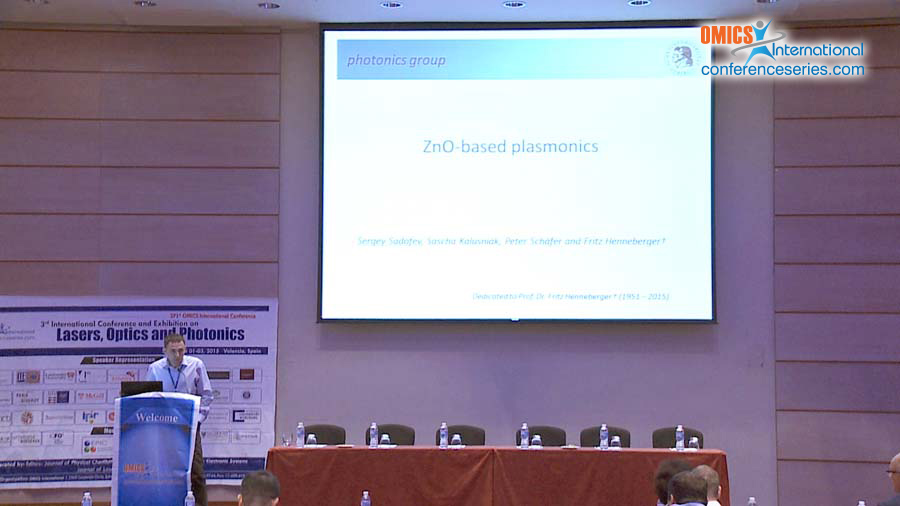
Biography
Biography: Sergey Sadofiev
Abstract
The interaction of metals with electromagnetic radiation gives rise to collective charge excitations called surface plasmon polaritons (SPPs). The potential of these coupled light-matter states for creating nano-scale photon-based circuits is the core of what is summarized today by the term "plasmonics". We will show that strongly n-type ZnO is an excellent plasmonic material in the infrared spectral range. Using molecular beam epitaxy, we are able to generate free carrier concentrations of almost 1021 cm-3 by Ga-doping of ZnO without significant deterioration of the crystal perfection. In this way, a metallic dielectric function is formed with a negative-to-positive crossover of the real part tunable from mid infrared up to telecommunication wavelengths. The losses are at least one order of magnitude lower than for traditional metals. Fabrication of epitaxial multilayer structures with different doping level enables the formation of novel SPP dispersions that can be engineered in a unique way. In particular, SPPs at metal/metal-type interfaces exhibit finite frequencies in the long-wavelength limit, in marked contrast to metal/dielectric SPPs. Coupling of SPPs at adjacent interfaces allows for almost arbitrarily shaping of their dispersion curves for achieving, e.g., phase matching for nonlinear processes or even anomalous dispersion. Further, we resonantly couple these SPP states to molecular vibrations and observe a profound change of the molecular line shape from absorptive to dispersive and even anti-resonance behavior when adjusting the resonance detuning. Moreover, hybridization of cavity photons and surface plasmon polaritons is observed defining novel routes for achieving and controlling stimulation phenomena in plasmonic systems.

